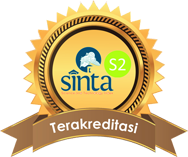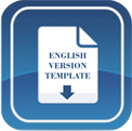DEVELOPMENT OF EDUCATION FOR SUSTAINABLE DEVELOPMENT (ESD) BASED CHEMSDRO MOBILE LEARNING FOR INDONESIAN JUNIOR HIGH SCHOOL: RATE OF REACTION
DOI:
https://doi.org/10.15575/jtk.v5i1.5908Keywords:
games, android, education for sustainable development (ESD), rate of reactionAbstract
ICT learning media mostly emphasize students content and motivation. The emphasis on protecting the environment as a form of development of sustainable living awareness is often considered not significant. Accordingly, many youth students begin to lose development of sustainable living awareness. This study aimed to produce and evaluate a learning media based on games in Android mobile learning- Chemsdro (Chemistry in Android) oriented to Education for Sustainable Development (ESD) on the topic rate of reaction. Characteristic  of Chemsdro Learning Media was the topic of rate of reaction created in the form of games that embedded in android mobile phones with game characters who have a mission to protect the environment. This learning tool was designed to give motivation for students to care about the environment. This research was Research and Development model, it was adopted the steps from Thiagarajaan including define, design, develop, and dissemination steps. The subjects of this study were students grade XI of SMA 1 Kendal. The product validation showed that the Chemsdro learning media was a very appropriate category to use with the Aiken V coefficient of 0.9. Student assessment of Chemsdro learning media also showed a good category.
References
Abanikannda, M. O. (2016). Prospects of learning chemistry through mobile digital devices. Int. J. Educ. Learn. Dev., 4(4), 29-36.
Ahiakwo, M. J., & Isiguzo, C. Q. (2015). Students’ conceptions and misconceptions in chemical kinetics in port harcourt metropolis of Nigeria. African Journal of Chemical Education, 5(2), 112-130.
Ardac, D., & Akaygun, S. (2004). Effectiveness of multimediaâ€based instruction that emphasizes molecular representations on students' understanding of chemical change. Journal of research in science teaching, 41(4), 317-337.
Arslan, H. O., Moseley, C., & Cigdemoglu, C. (2011). Taking attention on environmental issues by an attractive educational game: Enviropoly. Procedia-Social and Behavioral Sciences, 28, 801-806.
Azwar, S. (2012). Reliabilitas dan validitas edisi 4. Yogyakarta: Pustaka Pelajar.
Barab, S. A., Sadler, T. D., Heiselt, C., Hickey, D., & Zuiker, S. (2010). Erratum to: Relating Narrative, Inquiry, and Inscriptions: Supporting Consequential Play. Journal of Science Education and Technology, 19(4), 387–407.
Cachapuz, A. F. C., & Maskill, R. (1987). Detecting changes with learning in the organization of knowledge: Use of word association tests to follow the learning of collision theory. International Journal of Science Education, 9(4), 491–504.
DÃaz, M. D., Gómez, C. H., & De-la-calle, A. M. (2019). Professional Action Competences Through Experiences With Augmented Reality. Journal of Turkish Science Education, 16(4), 554–568.
El-Sofany, H. F., El-Seoud, S. A., Alwadani, H. M., & Alwadani, A. E. (2014). Development of Mobile Educational Services Application to Improve Educational Outcomes using Android Technology. International Journal of Interactive Mobile Technologies (IJIM), 8(2), 4.
Engjellushe, E. (2013). Education for sustainable development. European Journal of Sustainable Development, 2(4), 227-227.
Fibonacci, A. (2012). Peningkatan Hasil Belajar IPA Siswa Kelas X TKR1 SMK N 7 Semarang melalui Joyful Learning Menggunakan Game Guess My Word. Jurnal Penelitian Pendidikan, 29(2), 93–100.
Henich, R., Molenda, M., Russell, J. D., & Smaldino, S. E. (1999). Instructional Media and Technology for Learning.
Jauhari, J. (2009). Studi Terhadap Penggunaan Multimedia Interaktif Dalam. Prosiding Seminar Nasional Penelitian, Pendidikan Dan Penerapan MIPA, 425–432.
Laurie, R., Nonoyama-Tarumi, Y., Mckeown, R., & Hopkins, C. (2016). Contributions of education for sustainable development (ESD) to quality education: A synthesis of research. Journal of Education for Sustainable development, 10(2), 226-242.
Muyaroah, S., & Fajartia, M. (2017). Pengembangan Media Pembelajaran Berbasis Android dengan menggunakan Aplikasi Adobe Flash CS 6 pada Mata Pelajaran Biologi. Innovative Journal of Curriculum and Educational Technology, 6(2), 79–83.
Nazar, M., Sulastri, S., Winarni, S., & Fitriana, R. (2010). Identifikasi miskonsepsi siswa SMA pada konsep faktor-faktor yang mempengaruhi laju reaksi. Jurnal Biologi Edukasi, 2(3), 49-53.
Nugroho, R. S., & Purwandari, N. (2016). Implementasi Blended Learning Multimedia Berbasis Smartphone Untuk Pengayaan Pembelajaran Pada Sekolah XYZ. Jurnal Sains Dan Teknologi, 3(1), 37–48.
Perkasa, M., Agrippina, A., & Wiraningtyas, W. (2017). Sustainable Chemistry Oriented on Chemistry Learning to Increase Student Awareness to the Environment. Sainsmat: Jurnal Ilmiah Ilmu Pengetahuan Alam, 6(2), 169-178.
Pramuditya, S. A., Noto, M. S., & Syaefullah, D. (2017). Game Edukasi Rpg Matematika. Eduma: Mathematics Education Learning and Teaching, 6(1), 77-84.
Rohmah, L. (2014). Implementasi Kurikulum Berbasis Education for Sustainable Development (ESD) di SDIT Internasional Luqman Hakim Yogyakarta. Al-Bidayah: Jurnal Pendidikan Dasar Islam, 6(2).
Rusdi, H., & Yunus, M. (2014). Pengembangan Media Pembelajaran Berbasis Android “ChemBird†Pada Materi Kimia Kelas XI di SMAN 17 Makassar. Jurnal Ecosystem, 16.
Segara, N. B. (2015). Education for Sustainable Development (ESD) Sebuah Upaya Mewujudkan Kelestarian Lingkungan. Sosio Didaktika: Social Science Education Journal, 2(1), 22–30.
Sidabutar, E. D. C., Faniudin, M. N., & Said, M. (2013). Pengaruh Rasio Reaktan Dan Jumlah Katalis Terhadap Konversi Minyak Jagung Menjadi Metil Ester. Jurnal Teknik Kimia, 19(1), 40–49.
Thiagarajaan, S., Semmel, D. G., & Semmel, M. I. (1974). Instructional Development for Training Teachers of Exceptional Children: A Source Book. Bloomington, Indiana: ERIC Indiana University.
Ulum, M., Firmansyah, R. A., & Fibonacci, A. (2019). Effectiveness of Hands on Minds on Activities Based on SocioScientific Issue on Scient Literation. Paedagogia, 22(2), 159–170.
Vos, W. D. & Verdonk, A. H. (1985). A new road to reaction. Journal of Chemical Education, 62(3):238–240.
Yektyastuti, R., & Ikhsan, J. (2016). Pengembangan Media Pembelajaran Berbasis Android pada Materi Kelarutan untuk Meningkatkan Performa Akademik Peserta Didik SMA Developing Android-Based Instructional Media of Solubility to Improve Academic Performance of High School Students. Jurnal Inovasi Pendidikan IPA, 2(1), 88–99.
Downloads
Published
How to Cite
Issue
Section
Citation Check
License
Authors who publish with this journal agree to the following terms:
- Authors retain copyright and grant the journal right of first publication with the work simultaneously licensed under a Creative Commons Attribution-ShareAlike that allows others to share the work with an acknowledgement of the work's authorship and initial publication in this journal.
- Authors are able to enter into separate, additional contractual arrangements for the non-exclusive distribution of the journal's published version of the work (e.g., post it to an institutional repository or publish it in a book), with an acknowledgement of its initial publication in this journal.
- Authors are permitted and encouraged to post their work online (e.g., in institutional repositories or on their website) prior to and during the submission process, as it can lead to productive exchanges, as well as earlier and greater citation of published work (See The Effect of Open Access).








